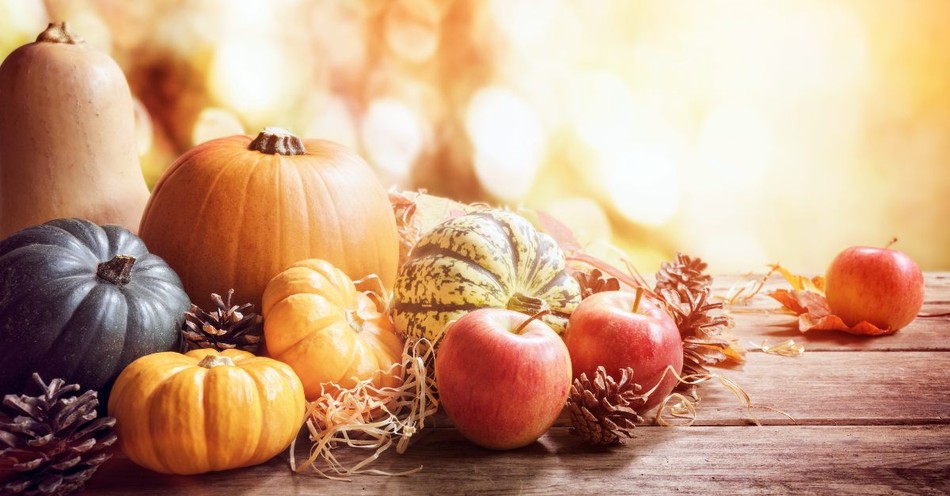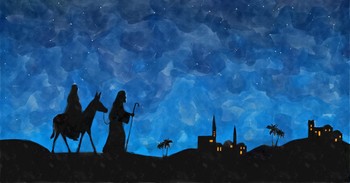Undoubtedly, Thanksgiving Day is one of the most iconic American public holidays. According to the Harris Poll, Thanksgiving trails only Christmas as the favorite holiday of Americans. Turkey, stuffing, sweet potatoes, pumpkin pies, football, overeating, and family gatherings — all a part of the Thanksgiving celebration we have come to know.
Just perhaps, one of the few meals at which so many will pray blessings and give thanks over the meal before partaking. All a part of the American tradition. And, for those who are a bit older than others, memories of this holiday have changed little since childhood.
So…obviously, we eat a lot. But what are the roots of the holiday we celebrate? What is the truth behind its history and transition into the phenomenon it has become? What is the true purpose of Thanksgiving? More importantly, what ought it mean to us today?
To help you in thanking God, we created a 30 Days of Gratitude Prayer Guide HERE. Download and print this guide to keep with you as a reminder of God's love and promises.
The Origin of Thanksgiving
Where did Thanksgiving begin? Americans today model the Thanksgiving holiday on a 1621 harvest feast shared between English colonists and the Wampanoag Indians. This shared feast is recognized as the first Thanksgiving celebration in the American colonies. Colonists in New England and Canada regularly held “thanksgiving” prayer services for blessings and shared this ceremony with the Native Americans over an Autumn harvest meal.
Thanksgiving’s Blurred History
For generations, the history of the first Thanksgiving event has been passed down within families and in grade schools. It has been widely taught — and widely believed — that the first Thanksgiving took place circa October 1621. A group of English Pilgrims, Puritans, had migrated to escape religious persecution.
These were members of a rather radical separatist church that found the Church of England corrupt. Before coming to America, the group spent several years living in Holland, as they were indeed being persecuted for holding clandestine services not sanctioned by the Church of England.
However, simply that the Puritans left England to escape religious persecution did not mean they believed in religious tolerance. Their society was a theocracy, which governed every aspect of their lives. Their commitment to their traditions, festivals and days of celebration was firm, bred into their religion.
As the story goes, these Pilgrims had settled in an area called the Plymouth Colony in New England. After living much of the winter onboard, the ships used to travel to the New World, they chose to celebrate their newfound religious freedom as well as their first harvest in their new home.
The celebration took place alongside approximately 90 new-found indigenous friends in their new land — members of the local tribe, who had taught the settlers how to cultivate the land and fish in the rivers. As the lore goes, the groups came together to enjoy a celebratory feast of thanks.
We would be remiss, however, if we did not also state some disagree with the American lore of Thanksgiving. Some say that the Pilgrims were anything but friendly to the Native Americans, and the conflict was often bloody and cruel.
Others say the local tribe — the rarely identified and little-known Wampanoag tribe — was anything but friendly with Europeans and served a selfish purpose.
The story many of us grew up with paints a picture of these new Americans starting a wonderful tradition of giving thanks alongside those indigenous Americans who had befriended them.
Whether truth or folkloric tradition, however, is somewhat irrelevant to what we celebrate today, and the intent of celebrating a day, a season, dedicated to giving thanks.
Thanksgiving’s Deeper Roots
In Britain, the idea of the American Thanksgiving holiday is often met with some mix of confusion, disdain, acceptance — you name it. This perhaps could be attributed to the belief that it was escapees from England who founded the concept. The irony is, in many ways, this American festival actually sprang out of the history and customs of Britain.
A celebratory harvest festival had been part of the fabric of British society since pre-Christian times. Saxons would come together every autumn to eat supper, fashion straw dolls, and harvest corn and other products. The Pilgrims — regardless of which “truth” you choose to believe — were simply following their own traditions and cultural norms they had grown up with, just as we do today.
Festivals of communal thanksgiving became popular in the aftermath of the English Reformation. The actions of Henry VIII gave rise to the Days of Thanksgiving to celebrate perceived acts of providence.
In other words, acts of God. For example, the Days of Thanksgiving were celebrated after the defeat of the Spanish Armada. When the English Pilgrims held their festival, they followed their familiar culture of thanksgiving for Providential blessings. Blessings of God.
But the English were not the only influence on Thanksgiving in America. Other European settlers celebrated Harvest festivals, and similar customs were followed by some Native Americans long before Europeans arrived.
Even so, it was more than a hundred years after that very first Thanksgiving that George Washington, in 1789, issued the first National Thanksgiving Proclamation — inviting Americans to thank God for their safety and happiness.
Then, almost another 100 years later, in 1863, Abraham Lincoln formally made Thanksgiving an annual national holiday on the final Thursday of November — later fixed as the fourth Thursday by FDR in 1941.
Thanksgiving’s One Common Purpose
Make no mistake, it is not the Pilgrims we celebrate, nor their relationship with the indigenous people around them. It is not the landing at Plymouth or any other such historical event.
We no longer celebrate the bountiful autumn harvest. It does not signify the start of the “holiday season” — Thanksgiving is not pre-Christmas.
We come together every fourth Thursday in November for one common purpose: to thank God. Millions of voices will be raised in thanks for all the blessings he has given us.
Regardless of which “truth” you choose to believe about that day with the Pilgrims and the Wampanoag tribe of Native Americans, it does not matter for us today. Not in this context, anyway.
We are called to live a life of thanks (Psalm 95:1-5; 1 Thessalonians 5:18), which is a beautiful, daily practice. But once every year, we come together with friends, family, and all our loved ones to give those thanks. We come together as a nation. To celebrate together. To thank the Lord our God.
So yes, we will come together to watch football and overeat turkey, stuffing, and pumpkin pie. But most importantly, we will join hands and, in one voice, thank God for His love, grace, His Son, Jesus Christ, and continued blessings on every one of us.
A blessed and happy Thanksgiving!
For further reading:
Can the Foundations of Thanksgiving Be Found in the Bible?
Is Thanksgiving Truly a Christian Holiday?
What Happened on the First Thanksgiving?
Thanksgiving Prayers and Blessings for Family and Friends
Photo Credit: ©iStock/Getty Images Plus/BrianAJackson

Greg doesn’t pretend to be a pastor, a theologian, or a Bible expert, but offers the perspective of an everyday guy on the same journey as everyone else – in pursuit of truth.
Greg can be reached by email or on Facebook @ Greg Grandchamp - Author.




